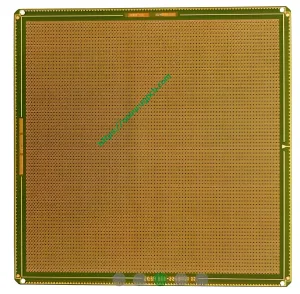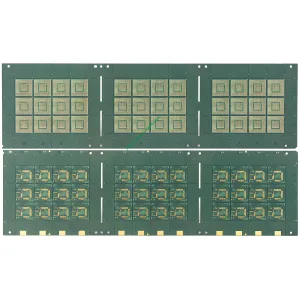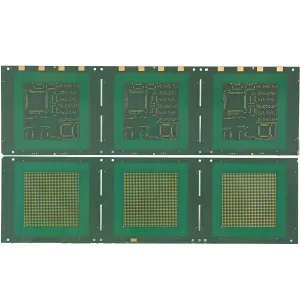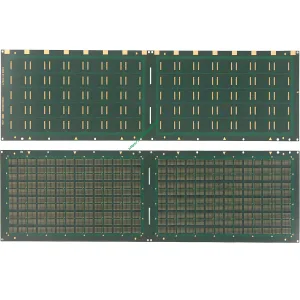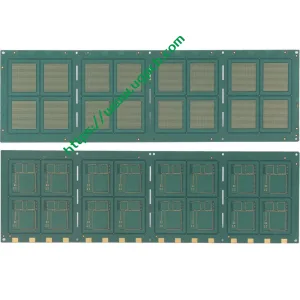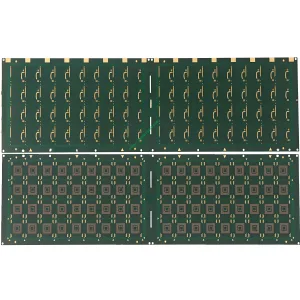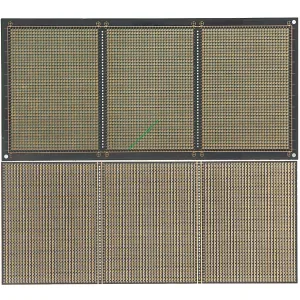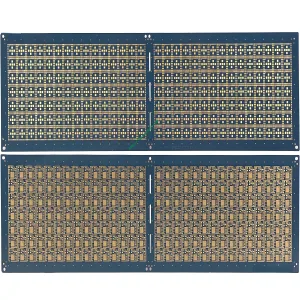Shengyi si10u 기능: 낮은 CTE, 높은 계수, 센서 IC 기판의 기절을 효과적으로 줄일 수 있습니다, 우수한 열과 수분 저항, 좋은 PCB 처리 가능성, 할로겐이없는 물질, TG280.
허락하다”s MEMS 센서에 대한 간단한 소개로 시작하십시오: MEMS의 전체 이름은 미세 전기 기계 시스템입니다. 마이크로 전기 기계 시스템은 배치로 생산할 수있는 시스템을 나타냅니다., 미세 메커니즘을 결합합니다, 마이크로 센서, 마이크로 액츄에이터, 신호 처리 및 제어 회로, 인터페이스까지, 통신 및 전원 공급 장치는 통합 마이크로 장치 또는 시스템과 같습니다.. 기존의 반도체 프로세스 및 재료를 사용하여 미크론 기술을 갖춘 칩에서 마이크로 기계를 제조하는 기술로 이해할 수 있습니다., 해당 회로와 전체적으로 통합하십시오.. 따라서 반도체 제조 기술을 기반으로 개발 된 고급 제조 기술 플랫폼입니다..
MEMS 센서의 장점: 전통적인 기계와 비교합니다, 그들의 크기는 더 작습니다, 가장 큰 것은 1 센티미터를 넘지 않습니다, 또는 심지어 몇 미크론 만, 그리고 그들의 두께는 훨씬 작습니다. 우수한 전기 특성을 가진 실리콘 기반 재료를 사용합니다. 힘, 경도와 젊은의 실리콘 물질 계수는 철분과 같습니다., 밀도는 알루미늄과 유사합니다, 열전도율은 Molybdenum과 Tungsten에 가깝습니다.. 통합 회로와 유사한 생성 기술 사용 (IC), IC 생산의 성숙한 기술 및 장인 정신은 대량 및 저비용 생산으로 사용될 수 있습니다., 기존에 비해 비용 성능이 크게 향상되도록 “기계적인” 제조 기술.
전통적인 마이크 및 MEMS 마이크는 7 ~ 8 개의 기계적 부품을 작은 MEMS 센서 칩에 통합합니다.. 그래서 볼륨은 매우 작고 무게는 매우 가볍습니다.. 칩 제조이기 때문입니다, 일관성이 우수하고 전력 소비가 적습니다, 대량 생산을보다 쉽게 만듭니다. 그러나 기술 요구 사항은 매우 높습니다. MEMS 센서의 출현은 소규모 크기와 고성능에 대한 모든 사람의 요구 사항을 크게 충족시킵니다..
이 강력한 칩은 센서 IC 기판을 사용하여 만들어집니다.. MEMS 센서는 센서 IC 기판을 칩 기판으로 사용합니다.. 먼저 MEMS의 응용 프로그램 영역을 살펴 보겠습니다, 그리고 센서 IC 기판을 사용하는 것이 더 나은 이유. 이해했다.
전자 기술 개발로, MEMS 센서의 애플리케이션 필드가 점점 더 광범위 해지고 있습니다., 최초의 산업 및 군용 항공 응용 프로그램에서 일반 소비자 시장에 이르기까지. 군사 및 항공은 소위 고 부가가치 MEMS 애플리케이션 필드에 속합니다., 하지만이 두 분야의 양은 너무 작습니다., ~에 대한 40 연간 백만 달러, 그리고 성장의 여지도 제한되어 있습니다. 의료 전자 제품의 MEMS 장치의 가치도 좋습니다., 센서의 평균 판매 가격은 다른 비슷한 MEMS 필드보다 훨씬 높습니다.. 전반적인, 고 부가가치 MEMS 산업의 연간 영업 소득은 300 백만 달러. 하지만, 가장 널리 사용되는 애플리케이션은 자동차 전자 산업 및 소비자 전자 응용 시장에 속합니다., 그 이상을 설명합니다 60% MEMS 센서 시장의. 아래 의이 두 가지 주요 응용 프로그램 영역을 분석하겠습니다.
하나는 자동차 전자 제품입니다. 모두 자동차의 센서가 기본적으로 제어 시스템에 있다는 것을 알고 있습니다., 주로 엔진 데이터를 수집합니다, 그러나 자동차의 운영 환경은 매우 가혹합니다, 고온, 부식, 먼지 및 기타 요인이 가능할 수 있습니다. 깨지기 쉬운 센서가 실패하게됩니다. 이때, 전체 센서의 정상 작동을 보장하려면 센서 IC 기판이 필요합니다..
 UGPCB 로고
UGPCB 로고


